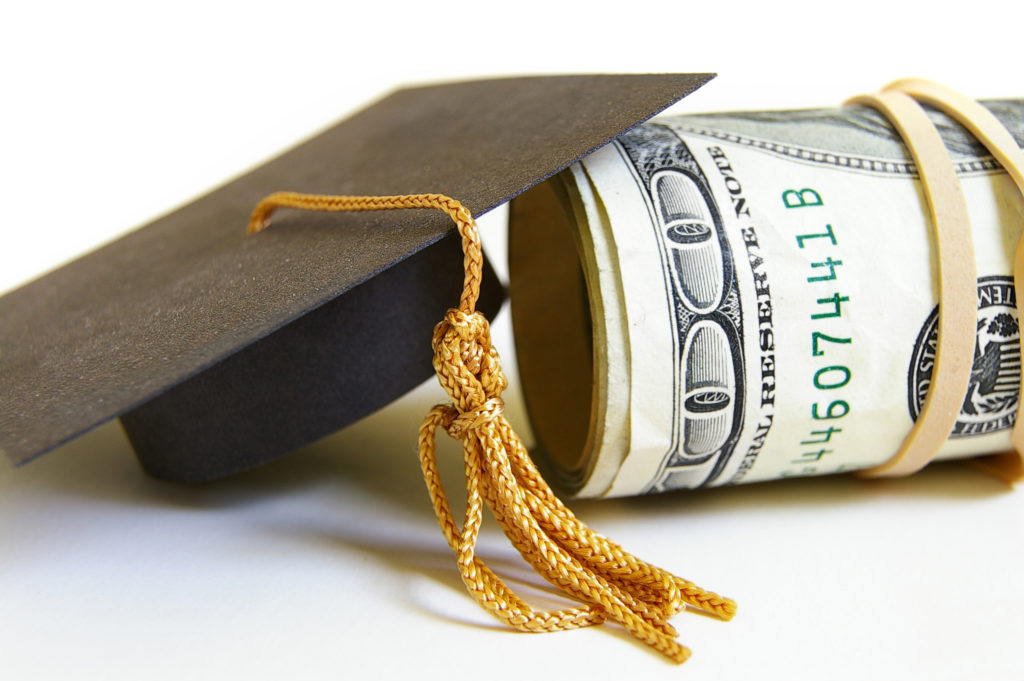For many people, a college education is impossible to obtain without borrowing money to pay for it. The average student loan debt for 2016 college graduates who borrowed for college, was $37,172 and 70% of the graduates left school owing money. Though there are two major sources of student loans — federal and private – the federal side dominates the action, both in amount of money available and loan repayment programs.

Federal student loans
Student loans come in many shapes and sizes, and the regulations for them can be different as well. There are several types for which you may be eligible.
Stafford and Perkins’s loans are federal loans given directly to the student. This type of loan, which is funded with government money, comes with low-interest rates and favorable repayment options. It also requires no credit check or collateral. They can be consolidated upon graduation, which is an important factor when it comes time for repayment.
Stafford loans are more common than another type of federal loans. There are two types of Stafford Loans: subsidized and unsubsidized. The type helps determine your interest rate and maximum loan amount.
- you won’t be responsible for making any payments until after you graduate. Your interest rate typically should be 3.76% in 2017-2018 school year. The government pays your interest for you while you’re in school. Subsidized loans are reserved for students who can demonstrate a financial hardship. Most go to students whose families’ annual income is less than $50,000.
- you’re responsible for paying off all the interest. In 2017, interest rates were fixed at 3.76% while you’re in school, but payments are typically deferred — or postponed — until after you graduate. All students are eligible for this type of loan. Your annual Stafford Loan limit for unsubsidized loans ranges from $5,500 to $12,500, depending on your year in school and whether you are claimed as a dependent on someone’s tax return. You are eligible for a larger loan if you are financially independent. If you’re financially dependent but your parents are ineligible for Parent PLUS loans, you’re permitted the same maximum loans as if you were independent.
Perkins loans, compared to the Stafford loans, are extremely popular and were more desirable than Stafford Loans because they were subsidized (government paid the interest while you were in school) and had a fixed interest rate of 5%. Other advantages of the Perkins loan included a longer grace period (nine months) before repayment began and special loan forgiveness provisions. Because of their favorable terms, Perkins Loans were reserved for students who show exceptional financial need. The loans were granted by a college and not all schools participated.
PLUS loans, originally called Parent Loans for Undergraduate Students, were created so parents could help fund their children’s educations.PLUS loans are available for both parents and graduate students. Parent PLUS loans are for parents of dependent undergraduate students, and Grad PLUS loans are for graduate students themselves. As with other education loans, PLUS loans are funded directly by the federal government. But unlike traditional student loans, they have no maximum amounts and can be used to cover any education costs not covered by other financial aid. They have a fixed interest rate of 6.31% for loans made in 2017.
The Direct Consolidation loan is a fixed-interest loan with flexible options, based on your ability to repay. There is no fee to consolidate, though you can only do it once. It could lower your monthly payments, but also could extend the amount of time needed to pay off the loan. Direct Consolidation Loans cut down on the torture of having to remember multiple due dates for various amounts to a lot of lenders. It also should help reduce (or eliminate) late fees when you miss a payment.
Private education loans
Private education loans also called alternative education loans, are an option for students and parents who still can’t meet financial obligations for attending college, even with money available through federal loans.
Private education loans more closely resemble personal loans than student and parent loans. Your eligibility and interest rate depend on your credit history. Your interest rate could be fixed or variable and is typically higher than with federally guaranteed education loans but lower than with other debts like credit card debt.
Other drawbacks on private loans are that they are not subsidized; some require payments while you’re still in school, and deferment and forbearance options are very limited.
Despite private student loans are available, but every expert, even those who work for banks and credit unions, advise students to exhaust all avenues for federal aid first. Private student loans have some conditions and terms — very good credit or a co-signer needed – that make them difficult. The interest rates usually are higher than those on federal loans and there are some involved that aren’t part of federal loans.
Despite your financial standing or field of study, you can find an education loan that suits your needs. It can help you and your family to fund your higher education and reduce the financial burden of school.






